Curated OER
Understanding A Culture Through Storytelling
Young scholars explore Japanese folk tales and create a performance that tells one of the Japanese folk stories.
Curated OER
How Can You Detect the Invisible?
Students participate in a lab activity in which they examine the characteristics of radon. They identify radon's link to cases of lung cancer. They complete a radon fact sheet and answer questions to end the activity.
Curated OER
Scroll Art And Retelling Stories
Learners create Japanese scroll art that represents a familiar folktale in this elementary school lesson that can be adapted for small group, or individual projects depending on ability.
Curated OER
Run For Your Life
Students draw a picture of animal tracks a scientist might find after they read a story about a fox chasing a rabbit. They make up a key to represent the foxes' tracks and the rabbit's tracks.
Curated OER
Following a Monster
Students follow tracks of a monster who has walked through their classroom to see what he has done. They discuss sequencing vocabulary before using computer software students sequence the monster's visit using a concept map. In a word...
Curated OER
How does the Amount of Light Affect a Photogram?
Students observe pictures of themselves using film and discuss how they think the image is processed to produce a photograph. They are introduced to photogram paper comparing it to photograph paper but understanding that no film is...
Curated OER
A Chance of a Life Time
Learners view and discuss the painting A Narrow Escape, by Alfred Jacob Miller. They write their own narrative about a time they were either scared or frightened. They make sketches of that time and choose one to paint using watercolor.
Curated OER
Inventors Unit Survey
Students develop and conduct a survey for their inventors unit. They create a five question survey and tally the survey results, and create a graph using Microsoft Word and Graph Club 2.0.
Curated OER
The Same but Different Part II
Third graders experiment with beakers of water and balloons to measure the volume of the gas in the balloon. They determine ways to change the volume of air in the balloon which changes its size but not its physical state. By heating the...
Curated OER
Evaluating Observations and Measurements
Third graders review the scientific method and how and in which steps scientists use observations and measurements. Then as a class, they hypothesize which ramp will send the car the farthest. They break into groups and send cars down a...
Curated OER
Geologist and Core Sampling
Third graders observe a cupcake and attempt to answer each question on the observation page. They write three sentences that explains how a geologist takes core samples of the earth's surface. Students make sketches and write...
Curated OER
Looking at the Community Tree
Third graders review the characteristics of living and nonliving organisms. As a class, they observe a tree and describe the interactions between the living and nonliving organisms surrounding it. To end the lesson, they ask a question...
Curated OER
Where Do Fish Live in the Hudson?
Learners explore the environmental factors that influence where fish live and determine the makeup of fish communities in the Hudson. They interpret guided observations and measurements to assess patterns, sequences and relationships.
Curated OER
Fish Communities in the Hudson
Students use tables of fish collection data to draw conclusions about where fish live in the Hudson Estuary. Given available data they interpret organized observations and measurements and recognize simple patterns, sequences, and...
Curated OER
Cloud Forecast
Learners record weather observations and research online weather data. In this weather observations lesson, students study the cloud cover for several days and record their observations in a chart. Learners identify the cloud types and...
Curated OER
Weather Instruments
Young scholars research weather instruments. In this weather lesson, students use the Global Climate DVD and take notes on weather instruments. Young scholars answer multiple choice questions on a worksheet.
Curated OER
Clouds as Art: Torn Paper Landscape
Students create a torn paper landscape and use it to study clouds. In this cloud study and art lesson, students make a background art image from torn paper. Students create a torn paper landscape and use cotton balls to illustrate...
Curated OER
Clouds and Your Imagination
Students study and illustrate clouds. In this cloud study lesson, students study clouds and then illustrate what they see. Students use their imaginations to interpret images from the cloud picture they drew.
Curated OER
Personal Observations
Students determine the appropriate clothing for warm and cold weather. In this weather and clothing lesson plan, students draw and describe appropriate clothing for cold and warm weather.
Curated OER
Wind
Students complete activities to study wind intensity. In this wind study lesson, students discuss wind speed and direction. Students then build a kite and windsock to help them study wind intensity. Students learn to use a wind meter for...
Curated OER
Building a House Using Circles
Learners study circles and problem solving. In this critical thinking instructional activity, students build a house using all of the circles given to them gluing them onto paper.
Curated OER
"Rikki-Tikki-Tavi"
Learners explore nature by reading stories in class. In this animal characteristics lesson, students read the story "Rikki-Tikki-Tavi," by Rudyard Kipling and identify the different animals mentioned in the book. Learners review the...
Curated OER
Water Cycle
Students answer short answer questions about the water cycle and other cycles. In this water cycle lesson plan, students explore clouds, rain, evaporation, and more.
Other
Peoples Education: Make Inferences in Science [Pdf]
This online textbook selection focuses on how scientists make inferences from evidence. Students are given a reading passage about underwater exploration and are asked to make inferences based on the text. The passage is followed by...


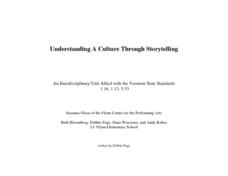

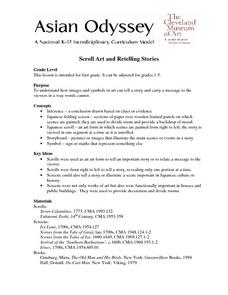
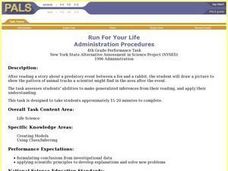


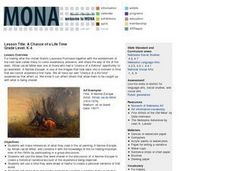


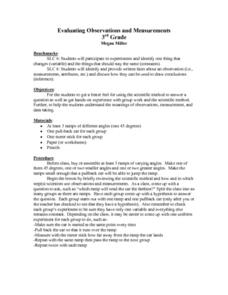
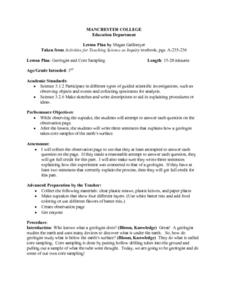

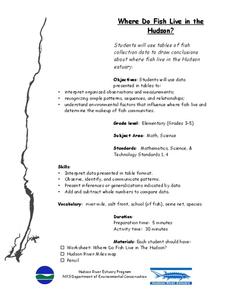
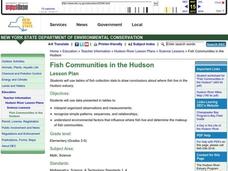
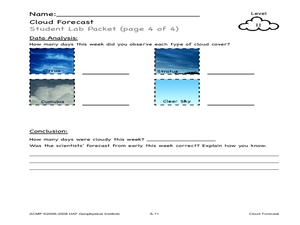


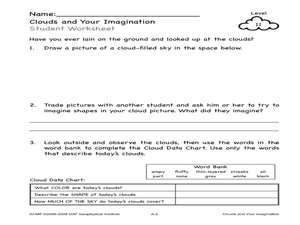
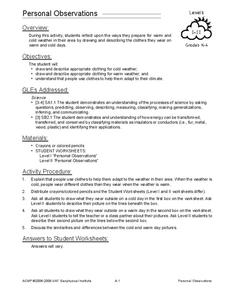

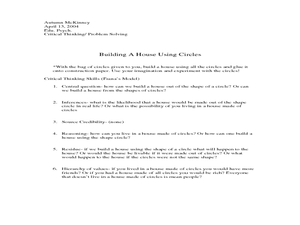


![Peoples Education: Make Inferences in Science [Pdf] eBook Peoples Education: Make Inferences in Science [Pdf] eBook](https://d15y2dacu3jp90.cloudfront.net/images/attachment_defaults/resource/large/FPO-knovation.png)